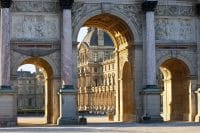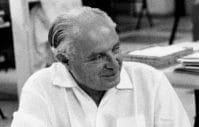
Rococo Style: How it Distincts in Architecture, Furnishings and Painting
Rococo Style: Birth and Development The Rococo, as a reflection of the trends, tastes and way of life of France…
second half of the nineteenth century
63cm x 77cm - 74cm x 86cm
Important pair of oil on canvas paintings applied on cardboard depicting portraits of spouses belonging to the Italian aristocracy of the second half of the 800th century.
Signed and dated lower left of the Gentildonna and lower left of the gentleman – Carlo Botti 1875
The pair of paintings in question certainly enter the corpus of works of the master Carlo Botti and thicken the catalog which documents his copious activity, and which according to the most authoritative source AM Comanducci's Critical and Documentary Dictionary, “I Pittori Italiani of the Nineteenth Century” must have consisted of around 2000 works, including 700 portraits.
The paintings in question, due to the high quality of the naturalistic rendering of the anatomy and the luministic effects, seem to have been executed following contact with the master Michele Gordigiani (Florence, 29 May 1835 - Florence, 7 October 1909), often far from academic circles he was in contact with the group of Macchiaioli artists and with whom Carlo was able to develop his great skills as a portraitist. Trends in portraiture in the Florentine context can also be seen in the colors of the backgrounds and the atmospheric-environmental effects reproduced.
The paintings including contemporary golden frame measure: 74cm x 86cm; while the canvases measure 63cm x 77cm.
We attach to the sale a historical certificate of authenticity provided by our Antiques Gallery.
To shed greater light on the vicissitudes of this skilled and important painter of the second half of the nineteenth century, we insert an interesting article written by Francesca Felicetti to celebrate the centenary of the painter's death for "La Gazzetta di Foligno".
The famous Latin phrase nemo propheta in patria fits perfectly when talking about the Foligno artist Carlo Botti (1848-1912). Although very well known in the circles of culture and art, he is in fact almost forgotten in his homeland, except for some information found in the writings of Michele Faloci Pulignani and Mario Sensi. For his uncommon merits as an artist, in 1900 he was named "Academic Painter of Merit" by the Academy of Perugia, the same one that in 1912, following the death of the painter, expressed its deep condolences defining him "as an artist and as a citizen true decoration of his native Foligno". The value of this artist is documented and confirmed in AM Comanducci's Critical and Documentary Dictionary, "I Pittori Italiani dell'Ottocento", which reports as follows: "he participated in several exhibitions, always admired and awarded in several" and in the Dictionary and Atlas edited by F. Boco and AC Ponti, “Umbrian Painters of the Nineteenth Century”. The approximately two thousand works (of which seven hundred portraits), which document the author's activity, represent a corpus of exceptional artistic value. After his stay in Perugia (Botti attended painting courses under Silvestro Valeri at the Academy of Fine Arts), he moved to Rome, where he studied for a short time with Giuseppe Maccari. But it was in Florence with the master Michele Gordigiani that Carlo Botti discovered his love for portraits, a favorite genre to which he dedicated himself with great success. To date, only forty of the seven hundred portraits have been found, and they depict some of the most representative characters of late nineteenth and early twentieth century society. Among the paintings you can admire the portraits of Queen Margherita of Savoy, Cardinal Domenico Svampa, Prince Rodolfo Boncompagni-Ludovisi, and Monsignor Michele Faloci Pulignani. The effigies explored the various expressions that characterize the human face and the different effects of age, and are so perfect that they seem alive. But it is the image of Christ or rather, the reclining head of the living Christ, as it appears in the study for the painting of the Sacred Heart in the San Carlo Institute, the true milestone of the artist's work. The professor. Botti often treated the sacred subject, and the sketch for the mosaic on the facade of the cathedral of Foligno depicting San Feliciano and Santa Messalina is also noteworthy. But Carlo Botti was first of all a citizen, a believer, a liberal Catholic committed to social issues. These are the extraordinary qualities that make him a man of great moral sensitivity (before artistic) and of rare intellectual honesty in a delicate historical moment characterized by important political transformations.
www.antichitabompadre.com

Rococo Style: Birth and Development The Rococo, as a reflection of the trends, tastes and way of life of France…

The Empire style, with its magnificent fusion of majesty and grace, remains an icon of classic furnishings, exerting a timeless charm…

Giò Ponti is one of the artists who most dominated the Italian post-war period, acting as a spokesperson for important innovations in the world…
have viewed this article in the last 30 minutes.